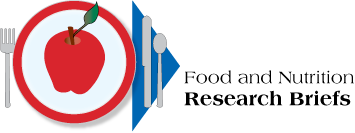
| July 2022 |
Distinguished Nutrition Scientist Alice H. Lichtenstein Honored as 2022 ARS W.O. Atwater Memorial Lecturer"Nutrition Information/MisinformationWho's Right? Who Gets to Decide?" was the title of the 2022 Agricultural Research Service W.O. Atwater Memorial Lecture, presented by nutrition scientist Alice H. Lichtenstein on June 15 at Nutrition 2022, the annual meeting of the American Society for Nutrition. "Food and nutrition information comes at the public from many sources and in many forms. Frequent discordance within this plethora of information has undermined people's trust in the scientific community and this in turn has impeded public health efforts to improve diet quality. Our challenge is to come together to engage in productive discussions on how best to communicate the most accurate and timely food and nutrition information available, that will ultimately lead to improved overall diet quality for all," Lichtenstein said in her Lecture. Lichtenstein's laboratory was among the first to document the detrimental effects of partially hydrogenated (trans) fat on blood lipids. This work helped lay the foundation for the labeling and subsequent banning of partially hydrogenated fat by the U.S. Food and Drug Administration. She currently is the Stanley N. Gershoff Professor of Nutrition Science and Policy at the Friedman School, at Tufts University. She also holds appointments as Professor of Medicine at Tufts Medical Center and Director of the Cardiovascular Nutrition Laboratory and Senior Scientist at the Jean Mayer USDA Human Nutrition Research Center on Aging. |
|







